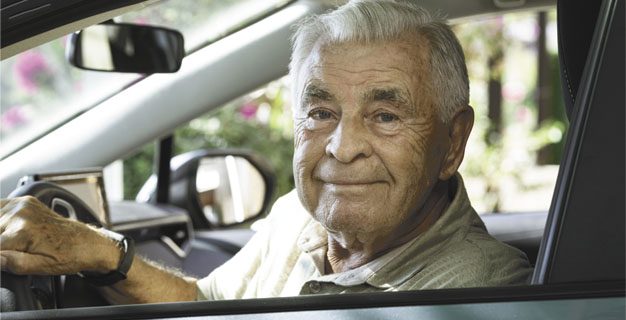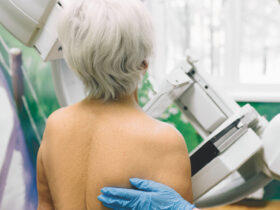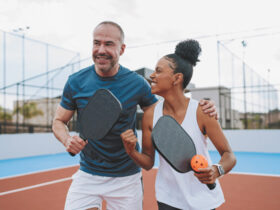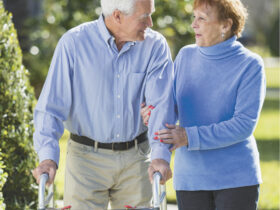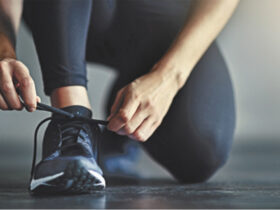By Shannon Willits, Master Pilates Educator
Pilates isn’t just for dancers or social media influencers—it’s a powerful, science-driven system that sharpens how your body moves, functions, and holds up under pressure. It’s time to train smarter, from morning stiffness to nursing an old injury, and noticing range of motion getting tighter by the year. Pilates helps you build strength where it counts, fire up underused muscles, and fix the breakdowns from years of wear and tear.
This isn’t about chasing a pump or maxing out reps. It’s about dialing in precision, control, and the kind of deep core power that holds your frame together—so you move better, play harder, and age like the engine of a well-kept Porsche. Think less “break down at 50,” more “built to outlast Clooney.”
The Tool Often Overlooked in Men’s Fitness
Cultural norms often condition boys and young men to move in a linear and force-dominant manner: push hard, lift heavy, repeat. This kind of training usually focuses too much on the front of the body and sticks to a limited range of movement. Over time, that can lead to tight hamstrings, shoulder impingements, and low back pain. These issues aren’t random—they’re the natural result of muscle imbalances and moving in the same patterns without full-body coordination.
Pilates was initially designed as a system to support full-body functionality through controlled, precise movements that emphasize core stabilization, breath coordination, and joint alignment. Rather than merely adding more load to dysfunctional patterns, Pilates helps reorganize those patterns at the neurological and fascial levels, facilitating improved posture, energy conservation, and pain reduction.
Built for Athletes. And Built to Last.
Some of the world’s highest-performing athletes include Pilates in their regular training schedules. This is not incidental. Pilates strengthens the smaller stabilizing muscle groups often ignored in weightlifting or sport-specific drills, particularly those around the shoulder girdle, hip complex, and spine. It enhances rotational strength and postural endurance, critical for athletic efficiency and joint health.
Athletes from football, basketball, golf, soccer, and baseball have publicly credited Pilates for helping them stay strong, recover faster, and move with more control. Instead of just building brute strength, Pilates trains the body to work as one connected unit, making it perfect for sports and workouts that demand power, repetition, and endurance.
Secondary Gains: The Underestimated Benefits
Improving performance is just the beginning. Pilates also delivers a range of benefits that are especially valuable for men:
. Better posture. Perfect for guys who spend long hours at a desk or behind the wheel, Pilates helps retrain your body to hold itself tall and strong.
. Stronger, safer joints. Better alignment and control mean less strain on your knees, hips, and shoulders, allowing you to move with less wear and tear.
. A healthier back. You’ll learn to decompress your spine and build strength where it matters, helping reduce pain and prevent future issues.
. Smarter breathing. Learn how to breathe in a way that supports digestion, powers your movement, andconnects your core to the rest of your body.
. Less stress. Controlled movement and focused breathing activate your body’s natural recovery system, lowering stress and helping you reset.
. Balanced hormones. Pilates supports healthy testosterone and metabolism through better sleep, more stable blood sugar, and stronger neuromuscular function.
And let’s be honest: it shows. Regular Pilates often leads to leaner muscle, better posture, and more upper-back mobility, allowing you to move better, feel better, and confidently carry yourself.
Strength That Transfers Beyond the Gym
Pilates develops strength that applies directly to real-world and sport-specific activities. In this context, functional strength refers to the ability to stabilize under load, rotate through multiple planes of motion, and maintain ideal posture through fatigue.
Key exercises that illustrate this include:
. The Hundred: Enhances respiratory efficiency and trunk endurance.
. Leg Circles: Reinforces lumbo-pelvic control and hip joint mobility.
. Side Plank Variations: Promote shoulder joint integrity and lateral line engagement.
. Bridging Series: Targets gluteal strength and spinal articulation.
. Standing Reformer Work: Develops dynamic balance and single-leg control—critical fall prevention and athletic readiness skills.
These subtle movements contribute to profound kinetic coordination and physical sustainability gains, especially in aging populations.
Systemic Impact: Deep Core and Internal Health
Pilates doesn’t just work the muscles you can see—it also strengthens the deep muscles inside the body that help with breathing, posture, and staying steady when you move. Activating and conditioning this system improves intra-abdominal strength and reaction, spinal support, and organ mobility. Clinically, this can have a measurable impact on:
. Chronic constipation and digestive sluggishness
. Stress-induced shallow breathing
. Pelvic dysfunction or pain
. Adrenal fatigue and overtraining symptoms
. Diaphragmatic inhibition and respiratory issues
Addressing these often-overlooked contributors to male health allows Pilates to function as a corrective tool and a proactive intervention for comprehensive well-being.
Movement Investment With Maximum Return
Pilates benefits the male body in ways that traditional strength training often overlooks. From joint protection to cognitive focus, from digestive support to functional strength, Pilates offers a multidimensional approach to movement training that aligns with the complex demands of modern male health.
This system does not replace strength training or cardio conditioning. It enhances them, fills in the gaps, and balances the lineup.
Pilates remains ahead of the curve as movement science continues to evolve—training the brain, body, and breath as one intelligent system.
Pilates has a place on your roster whether you’re a lifter, a golfer, a runner, a dad, or just tired of feeling stiff and sore.
Shannon Willits, Master Pilates Educator
Shannon Willits is a Master Pilates Educator with over 20 years of experience in functional movement and athletic performance. She is STOTT-certified, a Fellow of Applied Functional Science (FAFS), and a Functional Golf Specialist, bringing expertise to both rehabilitation and sport-specific training. As the owner of four Club Pilates studios in Lee County, FL, she trains and mentors aspiring instructors through her Southwest Florida Pilates Academy and innovative apprenticeship model. Shannon is also the host of the Alignment Matters Podcast, where she shares insights on Pilates, movement science, and wellness.



